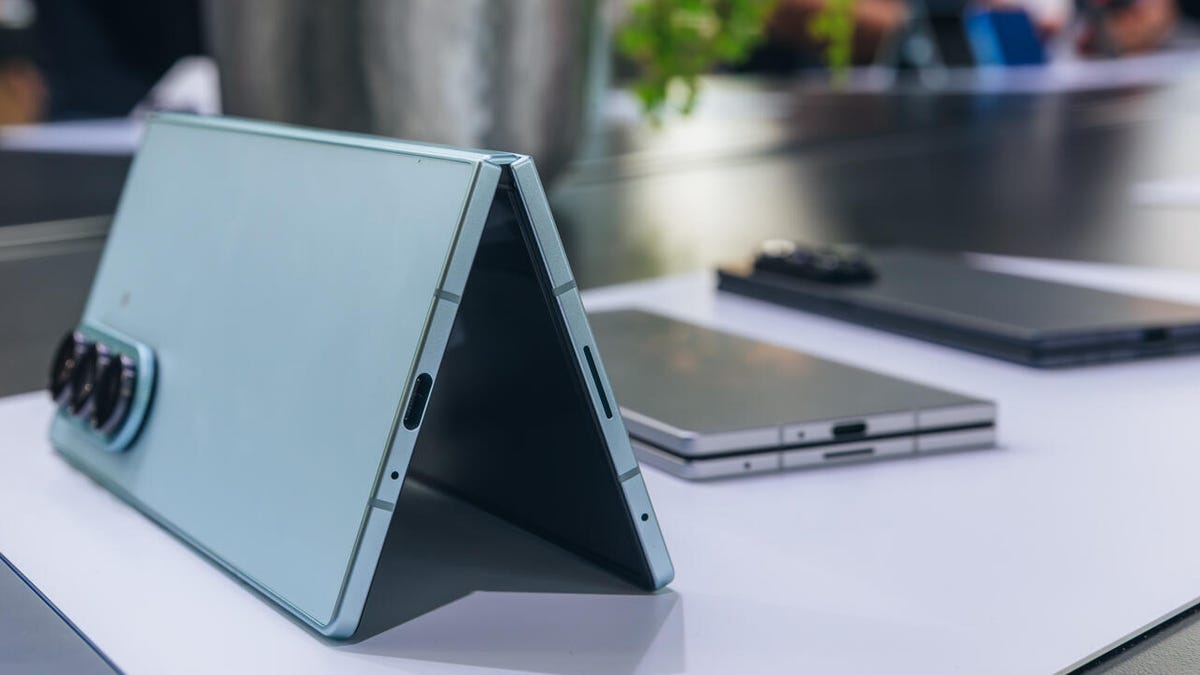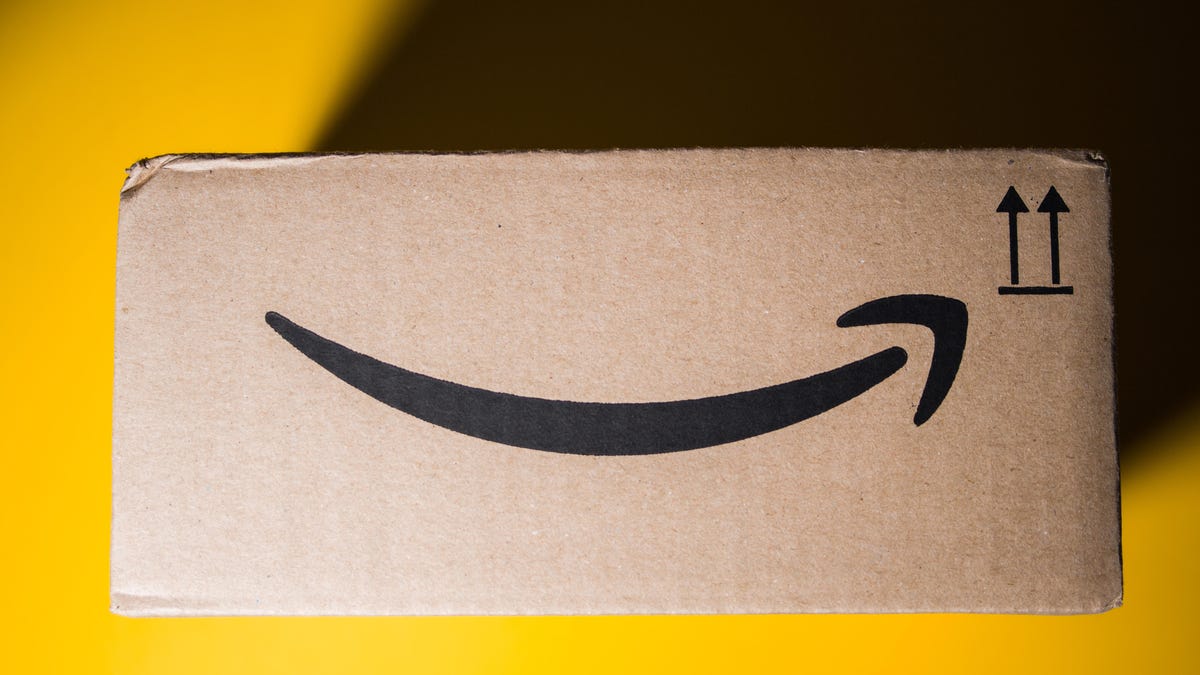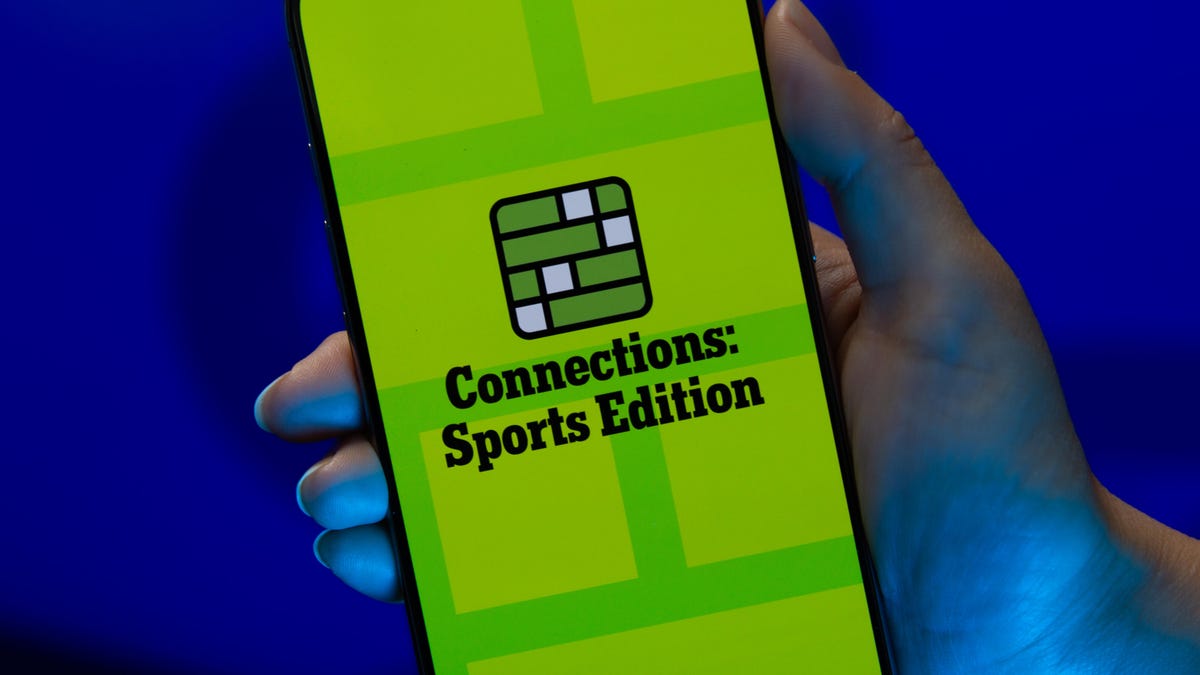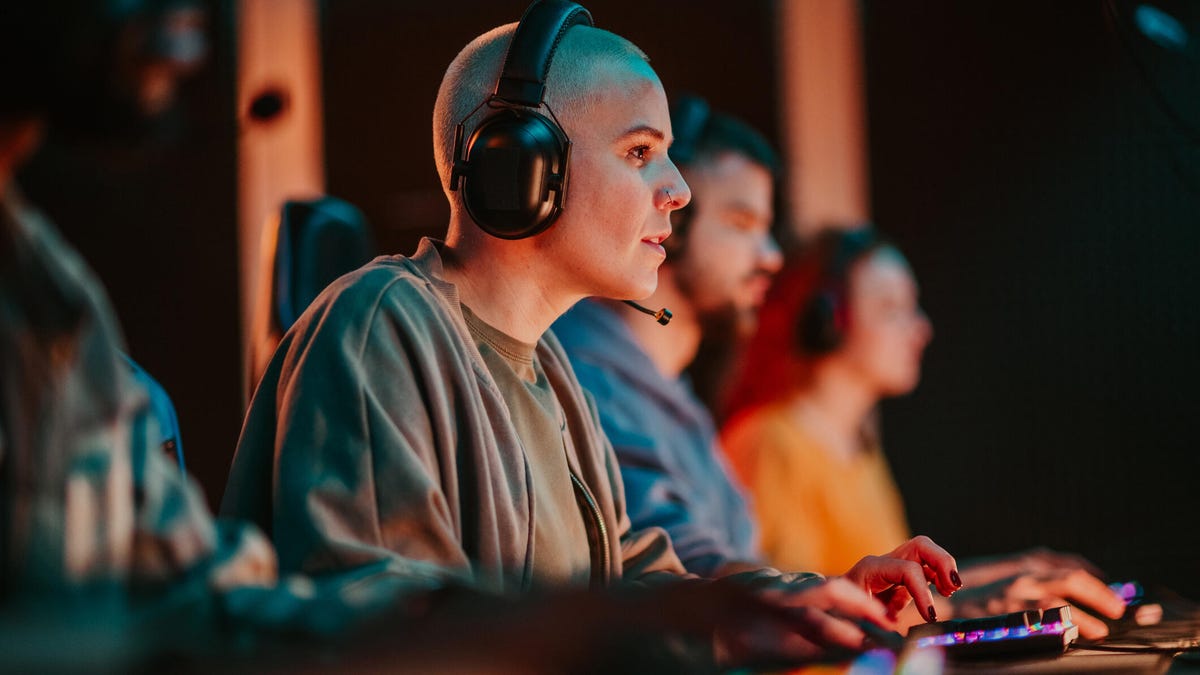Technologies
Galaxy Z Fold 7 vs. Z Fold 6: Slimmer Body, Bigger Screens and Slightly Higher Price
Samsung’s new book-style foldable has big upgrades on its predecessor — so how do they stack up?

At Samsung Unpacked in July, the phonemaker introduced its most advanced foldable yet: the Galaxy Z Fold 7. It supersedes last year’s Galaxy Z Fold 6 with upgrades big and small (or rather, big and thin), but how exactly do they compare? Here’s the Galaxy Z Fold 7 vs. Galaxy Z Fold 6 specs comparison.
Samsung has been releasing foldable phones for over half a decade now since the initial Galaxy Fold (no «Z» back then) launched in 2019, and the company has gotten pretty good at the newer smartphone format. Gone are the days of display and hinge durability issues; now, Samsung’s foldable phones are as reliable as their flat counterparts… though at $2,000, the Z Fold series’ prices are still high enough to put them out of reach of all but deep-pocketed enthusiasts.
The Z Fold 7 packs the latest Samsung upgrades and some design innovations, while the Z Fold 6 is still a powerful and capable device, leaving either a great choice for those who can afford them — just note the $100 difference in list price, as all those upgrades have led the Z Fold 7 to start at $2,000 while the Z Fold 6 starts at $1,900. Here’s how both foldable phones compare.
Design and display
Both the Z Fold 7 and Z Fold 6 follow the same broad design: a book-style foldable that has an outer screen to function more or less like a flat smartphone when folded closed. It can be unfolded to reveal its wider, more tablet-like inner display, providing more screen real estate for tasks, games and watching media.
The Z Fold 7, however, takes the Z Fold 6’s design and slims down its thickness so it takes up even less space in pockets or bags. The Z Fold 7 is 8.9mm when folded up, down from 12.1mm thick in the folded-up Z Fold 6. Likewise, when unfolded, the Z Fold 7 is only 4.2mm thick, down from the 5.6mm in the Z Fold 6. That’s even thinner than the Galaxy S25 Edge’s 5.8mm thickness, which commands an $1,100 price because of its own deliberately thin and light design.
While users may not see how much thinner the Z Fold 7 is unless they put it side by side with another phone, there are areas where it’s noticeably trimmed down — there’s hardly any bezel left around the top and bottom of the USB-C port. The new foldable comes in at 215 grams, which is about the weight of most flatphones and lighter than the Z Fold 6’s 239 grams.
Both foldables are IP48 rated for dust and water resistance, meaning while they may survive being dunked in water for at least 30 minutes (the «8» in that rating) they won’t protect against molecules smaller than 1mm (the «4» in that rating, lower than the «6» in most phones’ IP68 rating) — so keep either foldable away from dust and sand.
Read more: I Held the Galaxy Z Fold 7. It’s So Thin I Almost Forgot It’s a Foldable
The Z Fold 7 is overall slightly taller and wider than its predecessor, which results in bigger screens. The new foldable has a 6.5-inch AMOLED Full HD Plus (2,520×1,080 pixels) cover display, up from the 6.3-inch AMOLED Full HD Plus (2,376×968 pixels) cover display on the Z Fold 6. Both models have 1 to 120Hz variable refresh rates.
Similarly, the Z Fold 7 has a larger 8-inch AMOLED tablet-like (2,184×1,968 pixels) inner display compared to the Z Fold 6’s 7.6-inch AMOLED tablet-like (2,160×1,856 pixels) inner display. Both also have 1 to 120Hz variable refresh rates.
Cameras
The Z Fold 7’s camera array is mostly unchanged from last year’s model, with one glaring exception: the 200-megapixel main camera, which it inherits from the Galaxy S25 Ultra that launched in January (and also made it to the Galaxy S25 Edge that arrived in May). While we haven’t had much time to try it out, the Z Fold 7’s main camera should take sharper photos than the 50-megapixel one on last year’s Z Fold 6.
On paper, the Z Fold 7’s remaining cameras seem otherwise identical to their counterparts on the Z Fold 6: a 12-megapixel ultrawide camera, 10-megapixel 3x telephoto and a 10-megapixel front-facing camera on the cover screen. The 10-megapixel camera on its internal display is now inside of a display cutout, moving away from the under-display camera that prior Fold phones used.
Both foldables shoot video in 8K at 30 frames per second.
Specs and battery
It’s not surprising that the Z Fold 7 gets a boost in specs over last year’s Z Fold 6. The most notable is the Qualcomm Snapdragon 8 Elite in the Z Fold 7, which is more powerful and efficient than the Z Fold 6’s Snapdragon 8 Gen 3.
The Z Fold 7 has the same internal storage options as its predecessor: 256GB, 512GB and 1TB. But whereas the Z Fold 6 only offered 12GB of RAM for all three of those storage options, the new foldable kicks it up a notch by offering 16GB of RAM for its largest storage (the 256GB and 512GB are again paired with 12GB of RAM).
The Z Fold 7 has the same 4,400mAh battery capacity as last year’s Z Fold 6. But until we test out the new foldable, we won’t know whether its particular setup will result in more or less battery life — the slightly larger displays on the Z Fold 7 would suggest it would drain its battery faster, and prior testing with Snapdragon 8 Elite phones found they drained more power.
Connectivity-wise, the Z Fold 7 has the edge with its Wi-Fi 7 and Bluetooth 5.4 support, which are newer and more advanced than the Z Fold 6’s Wi-Fi 6E and Bluetooth 5.3 support.
But there’s still one area where the Z Fold 7 remains painfully behind the times: charging. The foldable still has 25-watt maximum charging, which is pretty dismal and borderline embarrassing in 2025 for a phone of this price — even the flawed OnePlus Open that launched in 2023 had faster 67-watt charging, which filled that foldable from dead to 76% in half an hour. As a point of comparison, last year’s Z Fold 6 (also 25 watts) recharged just over 40% in 30 minutes.
Both phones also have Qi wireless charging. Samsung is selling magnetic cases for the Fold 7 that add compatibility with Qi2 wireless chargers and other magnetic accessories.
Software, support and AI
The Galaxy Z Fold 7 launches with Samsung’s One UI 8 and Android 16 out of the box, which is an improvement over the Z Fold 6 arriving with Android 14. Yes, despite being a year apart, Samsung’s biggest foldable will arrive with the newest version of Google’s mobile operating system, which the software giant surprise-dropped back in June months ahead of its usual release window.
While this is obviously a big win for the new foldable to not have to wait weeks or months for Android 16, it’s also a longevity upgrade: Samsung is once again promising seven years of software and security updates for the Z Fold 7, which means it should get annual upgrades until 2032. But while the Z Fold 6 has the same number of upgrades, one of those was Android 15 that came out later in its launch year — meaning it should only get upgrades until 2030.
Both folding phones get the full suite of Samsung’s Galaxy AI features as well as Gemini access. From Google’s Circle To Search to erasing objects in photos, there’s a range of little tools and tricks. But because the Z Fold 7 gets more years of Android updates (and has a newer processor), it could get more Galaxy AI features in the future.
Galaxy Z Fold 7 vs. Galaxy Z Fold 6
| Samsung Galaxy Z Fold 7 | Samsung Galaxy Z Fold 6 | |
| Cover display size, tech, resolution, refresh rate | 6.5-inch AMOLED, 2,520×1,080p, 1-120Hz refresh rate | 6.3-inch AMOLED; 2,376×968 pixels; 1-120Hz variable refresh rate |
| Internal display size, tech, resolution, refresh rate | 8-inch AMOLED, 2,184×1,968p, 1-120Hz refresh rate | 7.6-inch AMOLED; 2,160×1,856 pixels;1-120Hz variable refresh rate |
| Pixel density | Cover: 422 ppi; Internal display: 368ppi | Cover: 410 ppi; Internal: 374 ppi |
| Dimensions (inches) | Open: 5.63 x 6.24 x 0.17 inches; Closed: 2.87 x 6.24 x 0.35 inches | Open: 6.04×5.21 x0.22 in; Closed: 6.04×2.68×0.48 in |
| Dimensions (millimeters) | Open: 143.2 x 158.4 x 4.2mm; Closed: 72.8 x 158.4 x 8.9mm | Open: 153.5×132.5×5.6mm; Closed: 153.5×68.1×12.1mm |
| Weight (grams, ounces) | 215g (7.58 oz.) | 239g (8.43 oz) |
| Mobile software | Android 16 | Android 14 |
| Cameras | 200-megapixel (main), 12-megapixel (ultrawide), 10-megapixel (telephoto), 10-megapixel (cover screen, selfie) | 50-megapixel (wide), 12-megapixel (ultrawide), 10-megapixel (3x telephoto) |
| Internal screen camera | 10-megapixel | 4-megapixel (inner screen under-display); 10-megapixel (cover screen) |
| Video capture | 8K at 30fps | 8K |
| Processor | Qualcomm Snapdragon 8 Elite for Galaxy | Qualcomm Snapdragon 8 Gen 3 |
| RAM/storage | 12GB + 256GB, 12GB + 512GB, 16GB + 1TB | 12GB + 256GB, 512GB, 1TB |
| Expandable storage | No | None |
| Battery | 4,400 mAh | 4,400 mAh |
| Fingerprint sensor | Yes | Side |
| Connector | USB-C | USB-C |
| Headphone jack | No | None |
| Special features | One UI 8, 25W wired charging speed, Qi wireless charging, 2,600-nit peak brightness, Galaxy AI, NFC, Wi-Fi 7, Bluetooth 5.4, IP48 water resistance | IP48 rating, 25W wired charging, wireless charging + powershare, 3x optical zoom (up to 10x digital and 30x Space Zoom with AI Super Resolution tech) |
| US price starts at | $2,000 (256GB) | $1,900 (256GB) |
| UK price starts at | £1,799 (256GB) | £1,799 (256GB) |
| Australia price starts at | AU$2,899 (256GB) | AU$2,749 (256GB) |
Technologies
If You Were ‘Tricked’ Into an Amazon Prime Subscription, You Should Have Been Paid by Today
Amazon is paying $1.5 billion to people who mistakenly subscribed to Prime, and the first round of payments are due today.

Amazon Prime provides a lot of valuable benefits to its members, but the company’s registration practices for its premium subscription from 2019 to 2025 led to many customers accidentally subscribing to a service they didn’t want.
Amazon is now paying the price for that deception — the US Federal Trade Commission levied a massive $2.5 billion settlement on the company for its subscription tactics.
The majority of the settlement — $1.5 billion — has been earmarked to refund eligible subscribers, with the rest serving as a civil penalty. Amazon is also now legally required to provide a clear, obvious option to decline Prime, making it as easy to leave the service as it is to join.
Amazon isn’t admitting to shady behavior. «Amazon and our executives have always followed the law, and this settlement allows us to move forward and focus on innovating for customers,» Mark Blafkin, Amazon senior manager, said in a statement. «We work incredibly hard to make it clear and simple for customers to both sign up or cancel their Prime membership, and to offer substantial value for our many millions of loyal Prime members around the world.»
The online retail giant started sending out payments to eligible people in November and was supposed to conclude its initial automatic payments today, Dec. 24. Read on to learn more about Amazon’s settlement and what to do if you think you’re eligible for compensation but didn’t receive a payment.
Why did the FTC fine Amazon?
The FTC filed suit against Amazon, accusing the company of using «dark patterns» to nudge people into Prime subscriptions and then making it too hard to cancel. The FTC maintained Amazon was in violation of Section 5 of the FTC Act and the Restore Online Shoppers’ Confidence Act.
«Specifically, Amazon used manipulative, coercive or deceptive user-interface designs known as ‘dark patterns’ to trick consumers into enrolling in automatically renewing Prime subscriptions,» the FTC complaint stated.
Who’s eligible for Amazon’s payout?
Amazon’s legal settlement is limited to customers who enrolled in Amazon Prime between June 23, 2019, and June 23, 2025. It’s also restricted to customers who subscribed to Prime using a «challenged enrollment flow» or who enrolled in Prime through any method but were unsuccessful in canceling their memberships.
The FTC called out specific enrollment pages, including Prime Video enrollment, the Universal Prime Decision page, the Shipping Option Select page and the Single Page Checkout. To qualify for a payout, claimants must also not have used more than 10 Amazon Prime benefits in any 12-month period.
Customers who signed up via those challenged processes and did not use more than three Prime benefits within one year will be paid automatically by Amazon within 90 days. Other eligible Amazon customers will need to file a claim, and Amazon is required to send notices to those people within 30 days of making its automatic payments.
If you are eligible for the automatic payment, you should have received an email from Amazon by today explaining how to claim the money. You can be paid via PayPal or Venmo. If you prefer a paper check, don’t accept the digital payment. The FTC says Amazon will mail you a check that you must cash within 60 days.
How big will the Amazon payments be?
Payouts to eligible Amazon claimants will be limited to a maximum of $51. That amount could be reduced depending on the number of Amazon Prime benefits you used while subscribed to the service. Those benefits include free two-day shipping, watching shows or movies on Prime Video or Whole Foods grocery discounts.
Customers who qualify for the payments should have received them from Nov. 12 to Dec. 24, 2025.If you are eligible for compensation from Amazon but didn’t receive a payout, you’ll need to file a claim after Amazon starts the claim process. The FTC says it will update its Amazon settlement site once that process has begun.
Customers who did not use a challenged sign-up process but instead were unable to cancel their Prime memberships will also need to file claims for payment.
Technologies
Today’s NYT Connections: Sports Edition Hints and Answers for Dec. 25, #458
Here are hints and the answers for the NYT Connections: Sports Edition puzzle for Dec. 25, No. 458.

Looking for the most recent regular Connections answers? Click here for today’s Connections hints, as well as our daily answers and hints for The New York Times Mini Crossword, Wordle and Strands puzzles.
Today’s Connections: Sports Edition has a real mix of categories, including one that’s all about a certain famous athlete. If you’re struggling with today’s puzzle but still want to solve it, read on for hints and the answers.
Connections: Sports Edition is published by The Athletic, the subscription-based sports journalism site owned by The Times. It doesn’t appear in the NYT Games app, but it does in The Athletic’s app. Or you can play it for free online.
Read more: NYT Connections: Sports Edition Puzzle Comes Out of Beta
Hints for today’s Connections: Sports Edition groups
Here are four hints for the groupings in today’s Connections: Sports Edition puzzle, ranked from the easiest yellow group to the tough (and sometimes bizarre) purple group.
Yellow group hint: Swing away!
Green group hint: What’s that on your bat?
Blue group hint: Catch the football.
Purple group hint: Lake Placid or Lillehammer.
Answers for today’s Connections: Sports Edition groups
Yellow group: Baseball bat materials.
Green group: Associated with George Brett.
Blue group: NFL rookie WRs.
Purple group: Olympic ____.
Read more: Wordle Cheat Sheet: Here Are the Most Popular Letters Used in English Words
What are today’s Connections: Sports Edition answers?
The yellow words in today’s Connections
The theme is baseball bat materials. The four answers are aluminum, ash, birch and maple.
The green words in today’s Connections
The theme is associated with George Brett. The four answers are 5, pine tar, Royals and third base.
The blue words in today’s Connections
The theme is NFL rookie WRs. The four answers are Burden, Egbuka, Golden and McMillan.
The purple words in today’s Connections
The theme is Olympic ____. The four answers are Games, rings, torch and village.
Don’t miss any of our unbiased tech content and lab-based reviews. Add CNET as a preferred Google source.
Technologies
Christmas Eve Gaming Crushed as Steam Goes Offline
Services related to the popular game hub seem to slowly be returning as of Wednesday afternoon.

Your Christmas Eve gaming session might not go as planned. Online gaming hub Steam went down on Wednesday. As of about 1:30 pm PT, the Steam store page was once again accessible, so services seemed to be coming back online.
The Steam outage appeared to begin mid-afternoon ET, according to Downdetector, which monitors site outages. (Disclosure: Downdetector is owned by the same parent company as CNET, Ziff Davis.)
A representative for Steam did not immediately respond to a request for comment.
As of Wednesday noon PT, Steam’s official X and Bluesky accounts hadn’t posted anything about the outage.
Gamers certainly noticed. «Steam down, Steam down!!!» wrote one Bluesky user.
Others commented on the bad timing just as gamers were enjoying time off or receiving gaming gifts. «‘You got a gift on Steam!’ oh cool ‘Steam is down’ oh cool,» wrote another Bluesky user.
-

 Technologies3 года ago
Technologies3 года agoTech Companies Need to Be Held Accountable for Security, Experts Say
-

 Technologies3 года ago
Technologies3 года agoBest Handheld Game Console in 2023
-

 Technologies3 года ago
Technologies3 года agoTighten Up Your VR Game With the Best Head Straps for Quest 2
-

 Technologies4 года ago
Technologies4 года agoBlack Friday 2021: The best deals on TVs, headphones, kitchenware, and more
-

 Technologies4 года ago
Technologies4 года agoVerum, Wickr and Threema: next generation secured messengers
-

 Technologies4 года ago
Technologies4 года agoGoogle to require vaccinations as Silicon Valley rethinks return-to-office policies
-

 Technologies4 года ago
Technologies4 года agoOlivia Harlan Dekker for Verum Messenger
-

 Technologies4 года ago
Technologies4 года agoiPhone 13 event: How to watch Apple’s big announcement tomorrow
